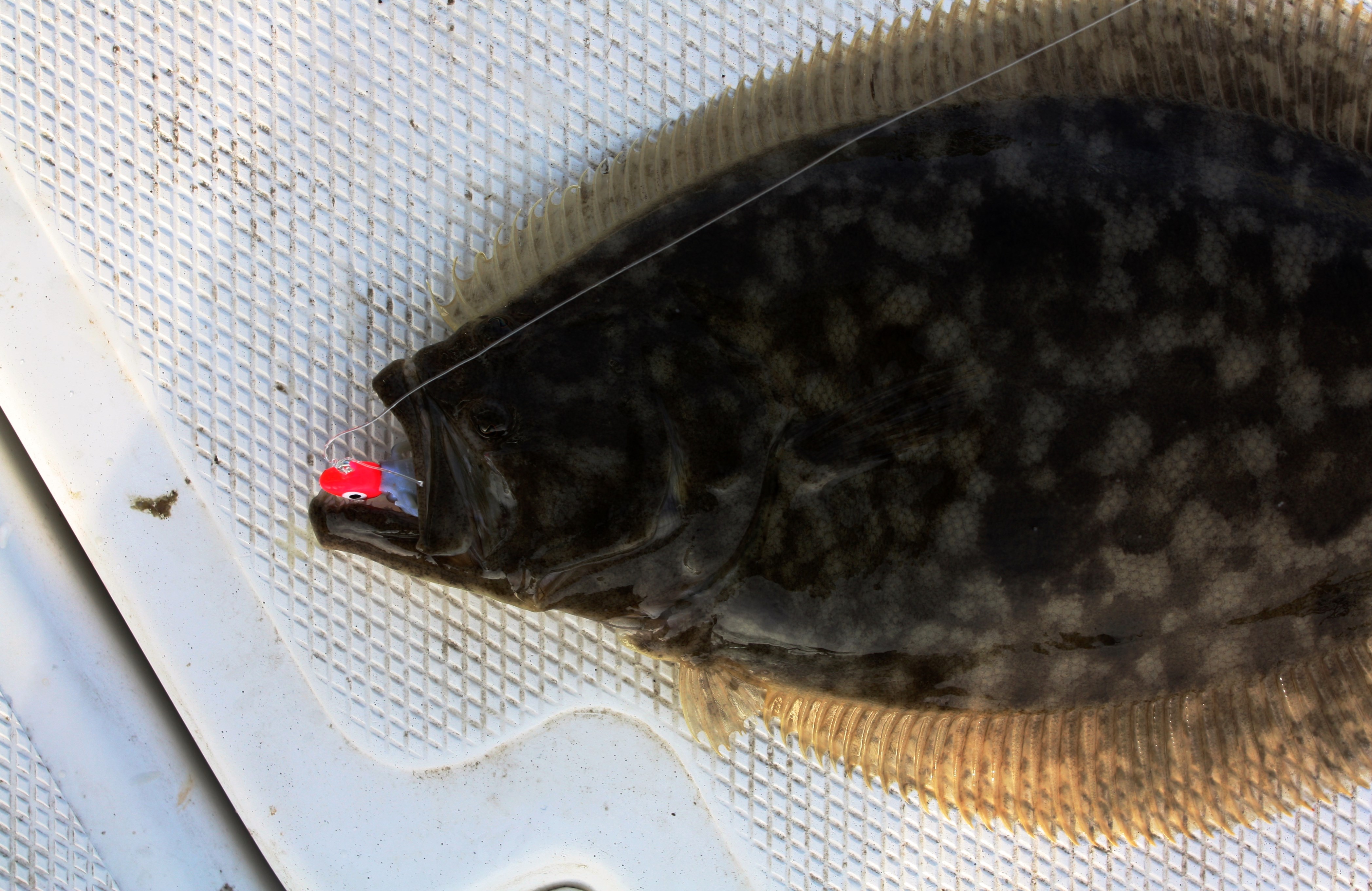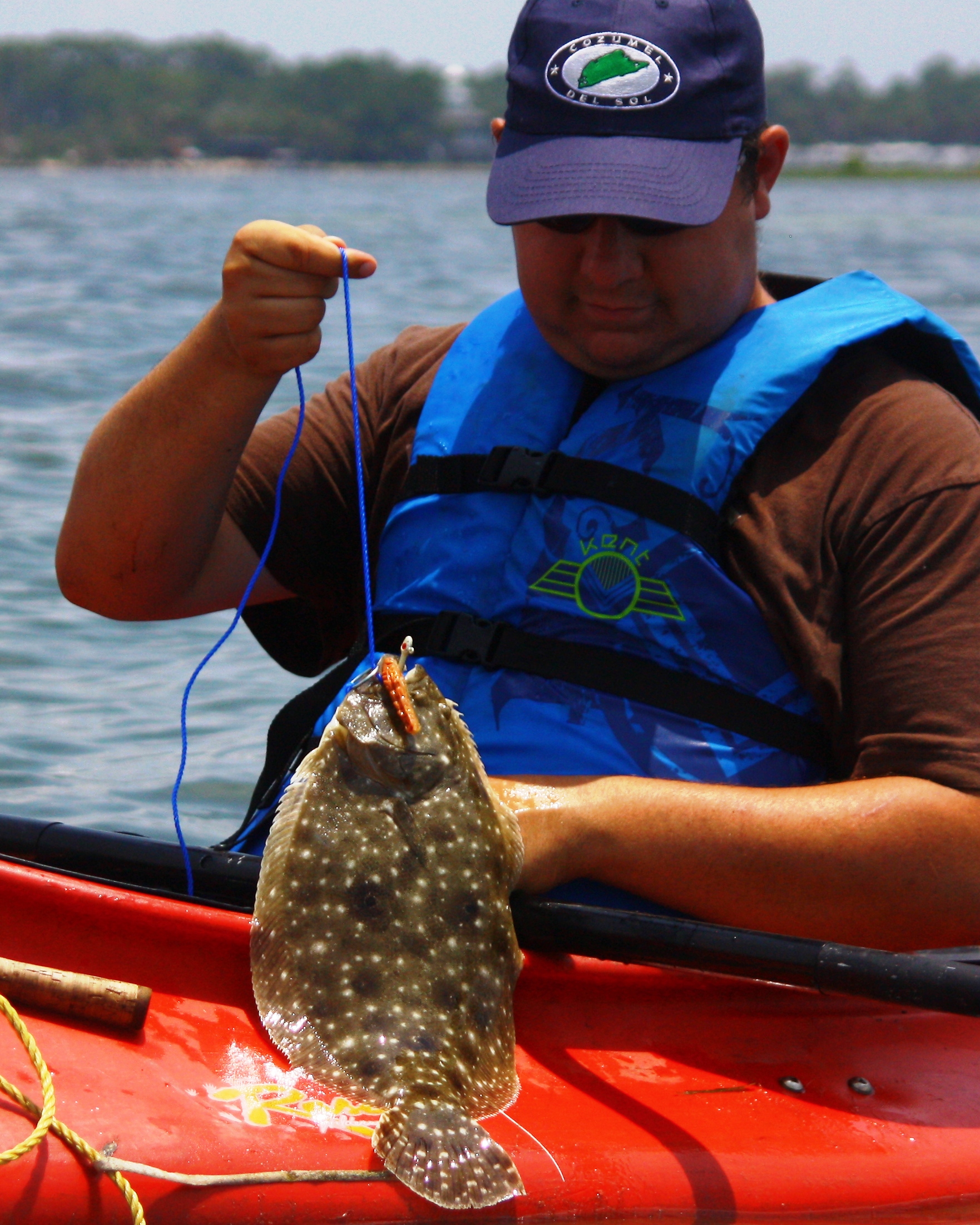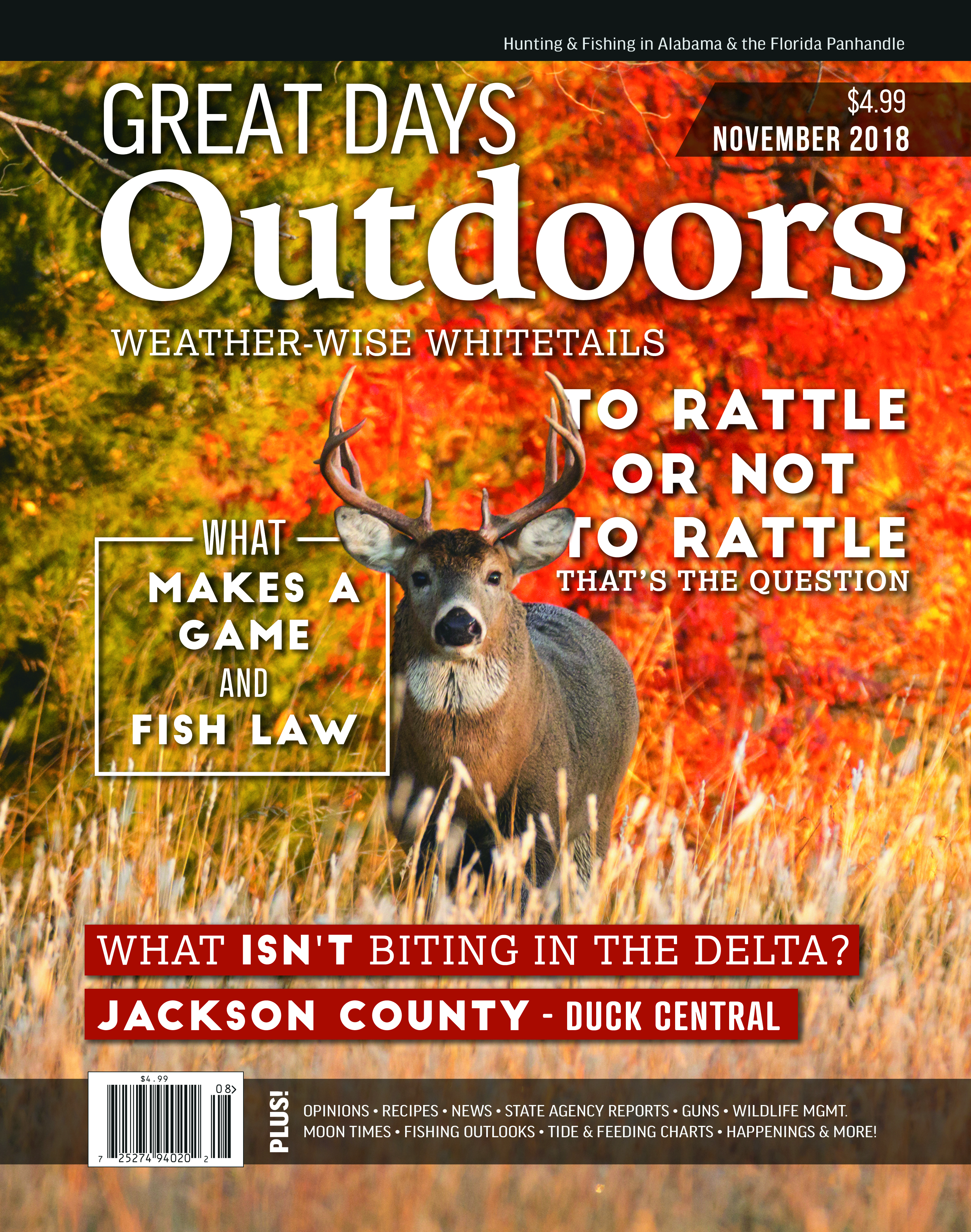It’s almost time to head in and get settled in front of the television. Kickoff is just about an hour away on this November Saturday. I’ve had a decent morning fishing with a few specks and one good redfish coming to hand, but the recliner and the football game are calling me. When I come to the last spot I want to fish this morning, I can see the dark line in the water which runs out on both sides of an old dock, and I know that the water changes depth rapidly where the color changes. There should be some good fish holding on this depth change dark line, so I grab a flounder lure, set up a flounder rig and start to focus on how to fish for flounder, on this fall day.
I make a long cast along the line, start a slow bottom-bumping retrieve, and just a little way into my retrieve, I feel the tap-tap I’ve been waiting for. I feel the line get heavy, and then I do…nothing.
I let the lure sit, and when I feel a slight movement in the line, I set the hook. Then comes a good pull and a strong run toward deeper water, and I know now that supper’s main course has just gotten a whole lot better.

Fishing a drop-off near a dock was the key to catching this flounder.
And when I get the fat two-pound flounder, probably the funniest looking but also the most delicious tasting fish in the Gulf waters, to the boat, I carefully slip the net under it and lift it into the ice chest.
Since I find on subsequent casts that there are several other nice flounder lying in wait for something tasty to come along where I caught this first one, I don’t make it home in time for the kickoff.
But I don’t mind at all being late for a football game on television when I can load up with fine, hard-fighting, delicious flounder like these on my own.
How to Fish for Flounder – Where They Are and What They’re Doing
All along the shoreline of the Santa Rosa Sound east of Pensacola, anglers can see and follow a dark line where the shallows fall off to deeper water. This drop-off line is a great place to find and catch November flounder.
The flatfish will lie on this drop-off and ambush prey as it moves along the depth change region.

This fall flounder came off a deep offshore reef.
Anglers can anchor or pole down on the drop-off line and cast along the drop-off line to cover a lot of water in a short period of time. In many cases, when the flounder are found on this drop-off line, there will be a bunch of them in a very concentrated area.
Captain Yano Serra certainly knows how to fish for flounder. He is an expert at finding and putting them in the ice chest, and he knows the Mobile Bay system waters very well. He says, “After the flounder make a run in October out toward the Gulf, they’ll still be moving out deeper. They’ll be in the Mobile River on deep ledges and out in the bay on platforms. I catch a lot of flounder in November out around the lighthouse and the cut-off in Heron Bay.”

A bayou channel edge was where this flounder was ambushing its prey.
He continues, “For November flounder, look on edges of channels, and I like a moving tide. Sometimes a neap tide can work too. On a neap tide, I can work my flounder rig up and down, so I don’t get hung up in structure as bad.”
**Editor’s Note** Flounder Regulations in Alabama waters have changed for 2019. Please see the full regulations HERE.
How to Fish for Flounder – Lures and Bait
Catching fall flounder doesn’t require a wide range of lures and bait. In fact, it’s a very basic type of fishing. Most flounder are caught on the simplest of artificial lures- lead head jigs with a soft plastic grub body. A handful of ¼ oz. jigs and a couple of packages of scented grubs will suffice for most flounder trips.
Live bait flounder rigs are also equally simple. A 3/8 oz. slip sinker, above the leader swivel and a small circle hook, is perfect, and it’s very easy to use. Simply lip hook the bait, cast the rig out and slowly retrieve the bait along the bottom.

Jigs are very effective for catching November flounder in deep water.
Bull minnows are usually available at local bait and tackle shops in November, and these are the classic live bait for flounder. Bull minnows are very tough, and they will live a long time in a bait bucket, and their lively actions when hooked attract the predator flounder from long distances.
Captain Yano says, “For my flounder rig, I use a bull minnow on a Carolina rig, and I also like a slip-cork rig where I adjust the length of the line below the float so the bait is right on the bottom.”
Now flounder anglers can sometimes get benefit from unexpected sources, like sea robins. Sea robins are strange looking fish that anglers often catch when fishing for other more desirable fish. Sea robins are not good for much, but anglers can use them to make one of the very best live bait offerings for flounder. When a sea robin is caught, anglers can take a sharp knife and cut narrow three to four inch long strips of the white belly of the sea robin. These belly strips are irresistible to flounder. And either used as a trailer on a jig head or simply hooked to the circle hook used for bull minnows, sea robin strips are great bait when your considering how to fish for flounder.
** Editor’s Note** In a Recent Alabama Saltwater Fishing Report Podcast, Capt. Richard Rutland discusses his favorite baits for Flounder and one bait out fishes all the rest. Tune in to here some great Flounder tactics.
How to Fish for Flounder – Techniques
Patience is required when you think about how to fish for flounder. The patience both to locate the best concentrations of fish and then patience to catch the fish. Fall flounder are not usually violent strikers when they take a bait.
Captain Yano tells us, “I work the flounder rig on the bottom, and I let the bait sit, and then I drag it about six inches and stop. Then I just wait.”

Flounder don’t jump much when hooked, but they do pull hard.
Anglers will learn to recognize the strike of flounder which usually consists of the lure or bait simply stopping and a solid heavy feel to the line. The temptation is great to make a solid and rapid hook set, and this is almost guaranteed to not hook the fish. Anglers need to let the flounder hold the bait or lure, take it deeper in their strange sideways mouth, and then set the hook as the fish moves away.
After the flounder is hooked and on its way back to the boat, they almost always save some energy for a last-moment flurry of energy right at the boat. Anglers will need to have the landing net ready and get a quick scoop under the fish. For some reason, flounder are very good at escaping at boat side, and an angler who is slow on the net will too often see a fine supper thrash around close to the boat and then escape. As Captain Yano says, “If you try to lift a flounder up and out of the water, you’ll lose it.”

Fishing from kayaks on drop-offs can be very effective for fall flounder.
And no matter where an angler is fishing for fall flatfish, attention should be paid to the current. Flounder are very current-oriented in fall, and anglers will want to cast up current and let the lure or bait move with the current back to the boat. Many times the current, whether tide or wind generated, will be strong enough to bump the flounder rig along the bottom, and this is probably the most effective way to present the offering to the flounder.
And of course, once the catching is done, it’s time for the eating, and there’s no fish in the Gulf that tastes as good as flounder whether fried, baked, or grilled. And flounder cooked right is just the kind of meal to make a football game on television better, even if we are a little late getting back to the house from a fishing trip.
This article first appeared in the November 2018 print issue of Great Days Outdoors Magazine. For more great hunting and fishing content for the deep South, subscribe to Great Days Outdoors print and digital editions or click the image to download this issue.

